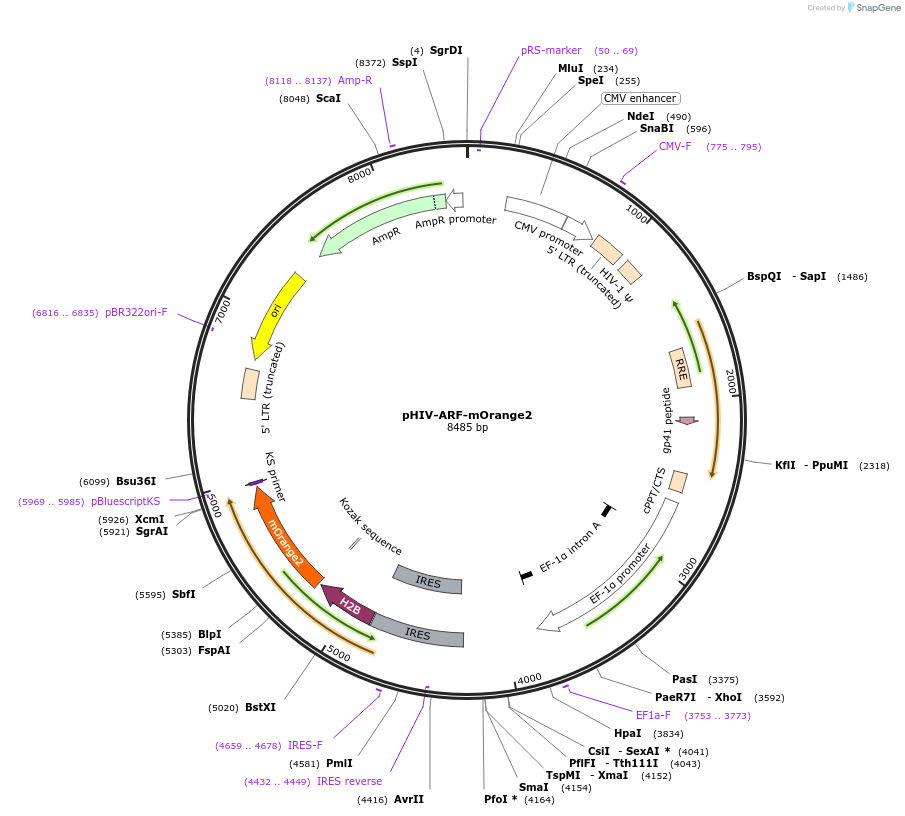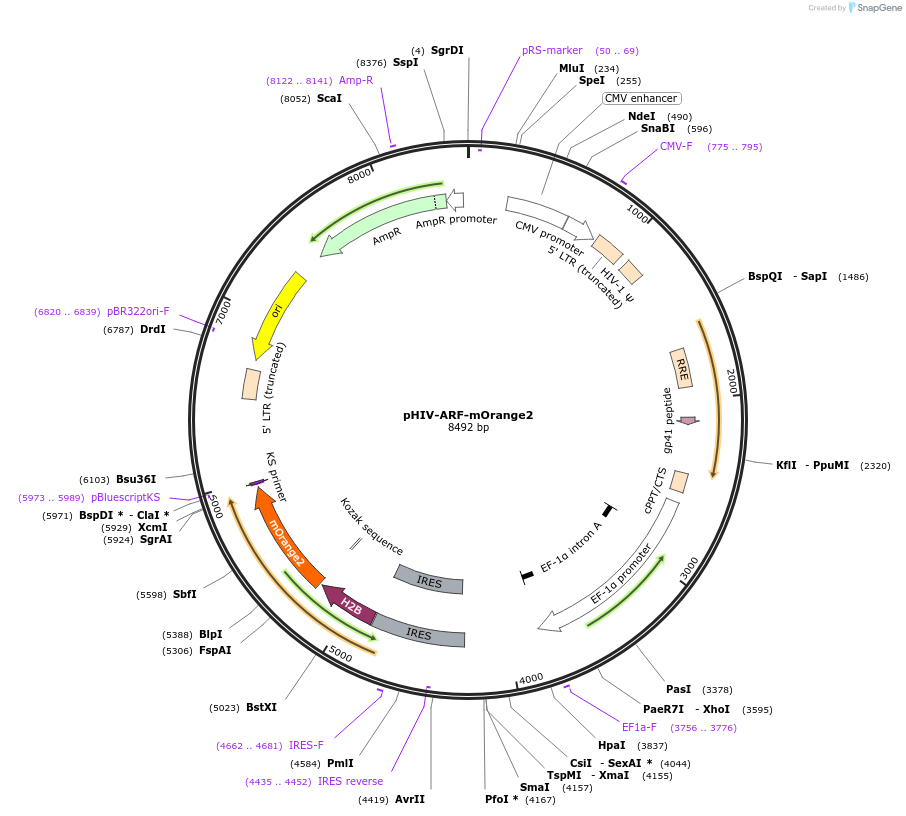pHIV-ARF-mOrange2
(Plasmid
#110731)
-
PurposeMammalian Expression of p14ARF IRES H2B-mOrange2
-
Depositing Lab
-
Sequence Information
Ordering
| Item | Catalog # | Description | Quantity | Price (USD) | |
|---|---|---|---|---|---|
| Plasmid | 110731 | Standard format: Plasmid sent in bacteria as agar stab | 1 | $89 | |
Backbone
-
Vector backbonepHIV
-
Vector typeMammalian Expression, Lentiviral
Growth in Bacteria
-
Bacterial Resistance(s)Ampicillin, 100 μg/mL
-
Growth Temperature37°C
-
Growth Strain(s)NEB Stable
-
Copy numberHigh Copy
Gene/Insert
-
Gene/Insert namep14ARF IRES H2B-mOrange2
-
Alt nameCDKN2A
-
SpeciesH. sapiens (human)
-
Entrez GeneCDKN2A (a.k.a. ARF, CAI2, CDK4I, CDKN2, CMM2, INK4, INK4A, MLM, MTS-1, MTS1, P14, P14ARF, P16, P16-INK4A, P16INK4, P16INK4A, P19, P19ARF, TP16)
Cloning Information
- Cloning method Gibson Cloning
Resource Information
-
Supplemental Documents
Terms and Licenses
-
Academic/Nonprofit Terms
-
Industry Terms
- Not Available to Industry
Trademarks:
- Zeocin® is an InvivoGen trademark.
Depositor Comments
Addgene sequencing detected a potentially mixed population, with a C to T nucleotide change that would cause a T8I mutation within the CDKN2A insert. Please screen multiple clones to ensure that the correct (C) one is isolated before proceeding with downstream work.
These plasmids were created by your colleagues. Please acknowledge the Principal Investigator, cite the article in which the plasmids were described, and include Addgene in the Materials and Methods of your future publications.
-
For your Materials & Methods section:
pHIV-ARF-mOrange2 was a gift from Robert Judson-Torres (Addgene plasmid # 110731 ; http://n2t.net/addgene:110731 ; RRID:Addgene_110731) -
For your References section:
Bi-allelic Loss of CDKN2A Initiates Melanoma Invasion via BRN2 Activation. Zeng H, Jorapur A, Shain AH, Lang UE, Torres R, Zhang Y, McNeal AS, Botton T, Lin J, Donne M, Bastian IN, Yu R, North JP, Pincus L, Ruben BS, Joseph NM, Yeh I, Bastian BC, Judson RL. Cancer Cell. 2018 Jul 9;34(1):56-68.e9. doi: 10.1016/j.ccell.2018.05.014. 10.1016/j.ccell.2018.05.014 PubMed 29990501




